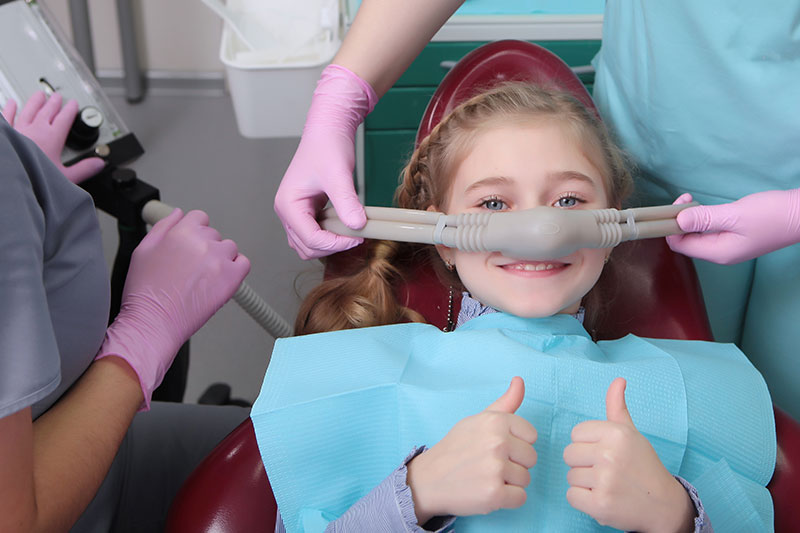Sedation Methods in Wilmington

We all know that children can get understandably worried or scared when they need a dental procedure such as a root canal, extraction, or oral surgery. Today, we have a way to make the experience better.
There are different sedation techniques that can be used to calm dental patients before and during in-office treatment, or to make them more comfortable for longer procedures. Dental sedation is different from pain management. The latter involves shots and numbing agents. But if the idea of getting a numbing shot frightens your child, then dental sedation can help relax and take your child's mind off the treatment process.
Depending on your level of dental anxiety, Dr. Michele Simpson may recommend one of the following types of dental sedation:
1. IV Moderate Conscious Sedation
Some dental procedures require children to be completely still as there may be a lot to fix. Also, the noise of a dentist's drill may be scary for kids. Fortunately, IV dental sedation is available for children.
There are three levels of sedation dentistry: mild sedation, moderate sedation, and deep sedation. IV dental sedation is considered deep sedation.
Before a child receives IV dental sedation, their health history will be taken by a childrens dentist to make sure it is appropriate for the child. Parents always have a chance to ask questions about the procedure and sedation. After all those questions are answered, the parent will be asked to sign consent forms.
On the day of the dental procedure, the child will be distracted with toys and/or video games while an IV is placed in the child’s arm and sedation medication flows in through the IV. A continuous flow of medication is used during the dental procedure. The child will still receive numbing medication in the area of the procedure.
While the dentist, or oral surgeon, performs the procedure, a second dental professional will be monitoring the child's heart rate, heart rhythm, blood pressure, and oxygen saturation.
At the end of the dental treatment, the IV dental sedation is turned off, and the IV is removed as the child begins to awaken. The child will likely feel refreshed and have little memory of the appointment.
If your child needs a complex dental procedure, an IV dental sedation may be the perfect answer. Please call our office and make an appointment with the dentist. We will go over all the options to keep your child comfortable. We are kid-friendly and ready to help.
Children’s Laughing Gas Dentist in Wilmington
Laughing gas, mixed with oxygen, creates a relaxing effect but does not cause the child to fall asleep. Children may feel lightheaded, experience a floating sensation, and have a happier mood. Laughing gas relaxes an anxious child, and takes the edge off so he, or she, is calmer during the dental procedure.
Laughing gas eliminates a sense of time to help children, with short attention spans, during extensive dental treatment. They will not be as anxious or feel the need to move around.
Laughing gas can be easily controlled. The dentist, or a dental assistant, can adjust the amount of gas the child needs. Because laughing gas wears off so quickly, the side effects are low. The child breathes oxygen for a few minutes at the end of treatment so that all the laughing gas leaves their body.
Parents should make sure their child does not have a full stomach as laughing gas can cause nausea and vomiting in a small percentage of kids if they have a big meal before their appointment.
Parents may be wondering if laughing gas actually makes kids laugh. That only happens in a very small percentage of kids.
If your child needs a dental procedure that involves drilling or extractions, you may want to consider laughing gas. Please call our office and make an appointment with the dentist to go over your child’s dental condition and what procedure your child may need.
Call us today!

